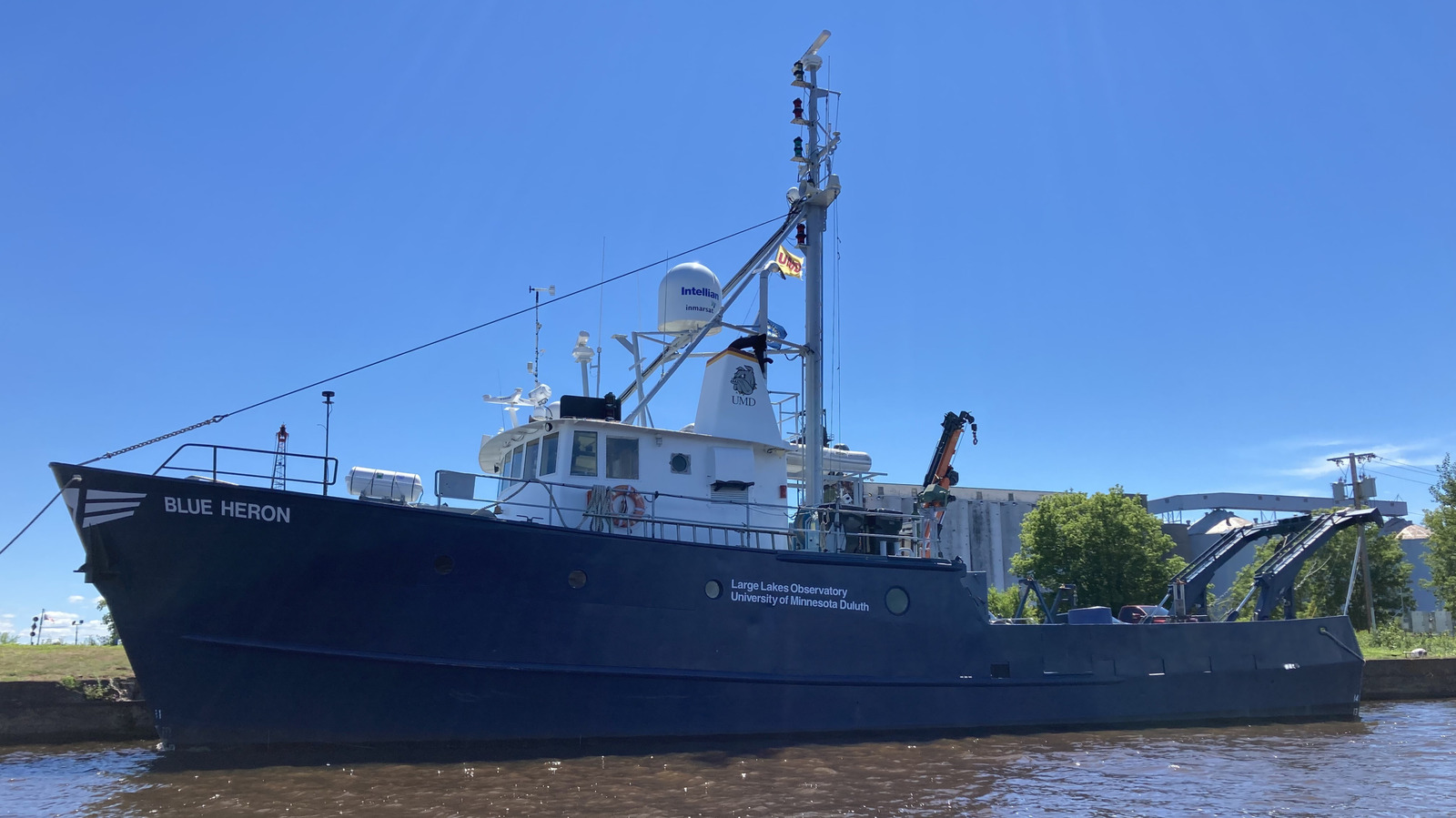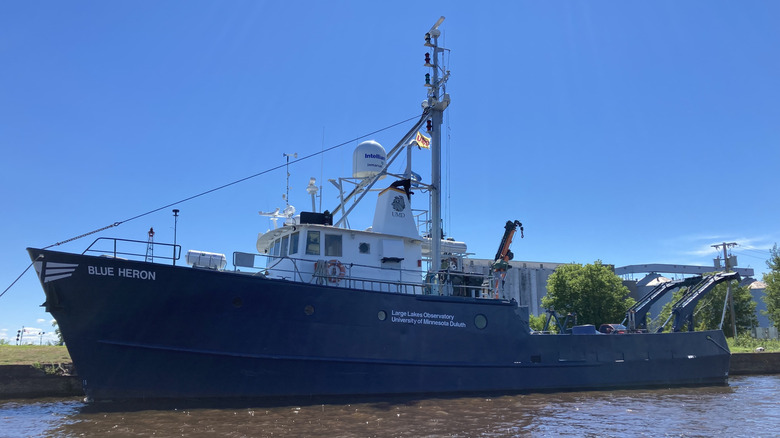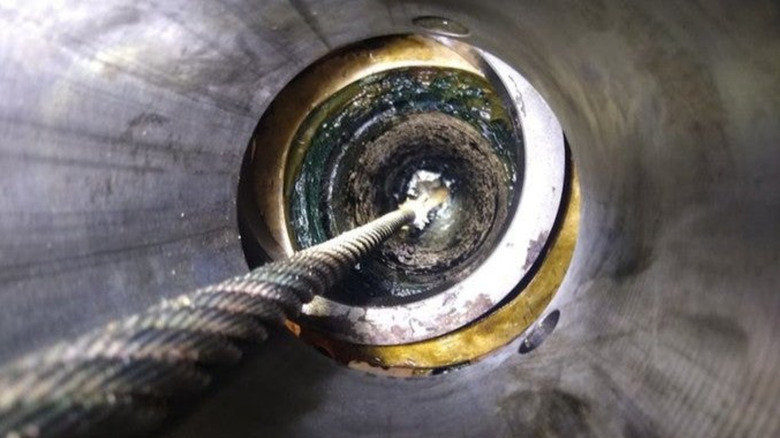Researchers from the University of Minnesota Duluth docked their researched vessel, the Blue Heron, for an “unanticipated repair” last September and found the cause of the problem wasn’t just unanticipated, it was downright bizarre.
The boat’s single diesel-driven propeller shaft had become uncommonly noisy, and the 86-foot machine was hoisted from the bosom of Lake Erie into dry dock when a “tar-like” gooey ooze was observed seeping from the Blue Heron’s rudder shaft. The ship had a stowaway, reports Detroit PBS, it was unknowingly carrying a previously undiscovered life form. Large Lakes Observatory Marine Superintendent Doug Ricketts reportedly bottled the substance and brought it to a group of researchers to see if they could make anything of it. The truth is out there, and it’s called ShipGoo1.
Under close observation, the goo turned out to be teeming with life, a previously unknown microorganism that bloomed in the dark, warm and unoxygenated environment of the ship’s rudder shaft housing. “The biggest surprise was that the ship goo had life in it at all,” UMD biologist Cody Sheik explained. “We thought we’d find nothing. But surprisingly, we found DNA and it wasn’t too destroyed, nor was the biomass too low.” The grease in the rudder shaft wasn’t just grease, it was alive!
By sequencing the DNA of the ship goo and comparing it to global databases, Sheik and his research team specializes in studying extreme-environment microbes and they confirmed they were dealing with some stuff we ain’t never seen before. They say microorganisms have come to thrive inside common environments built by humans “remain drastically under-sampled.”
Is it alien?
The scientists believe the ShipGoo1 microorganisms are part of a complex food web and could have contributed to the premature failure of the prop shaft through bio corrosion. Similar but genetically distinct microorganisms have been discovered in tar pits and petroleum wells around the world. Because of this, and the fact that the lake waters the ship travels in are highly oxygenated and deadly to the goo, the research team hypothesizes that the organisms were dormant in the grease used to lubricate the shaft. No oozing or seeping was noted during the ship’s previous maintenance back in late 2021, suggesting something changed in the grease environment between then and now to allow for a microorganism bloom, but what, they don’t yet know.
Ship Goo is indicative of the kind of research that can be done when scientists have the support and funding they need, and the freedom to explore the world around us. “Scientists don’t often have time to be playful—we’re focused and have projects to complete,” Sheik said. “Time and resources for exploratory work can be daunting. But this shows why it matters.”
As fun as it is, ShipGoo1 won’t remain the organism’s name long-term. The research team plans to collaborate with other community scientists to provide an official name once more study has been conducted. “It’s fun science,” Sheik concluded. “By calling it ship goo for now, it brings some joy to our science. We can find novelty wherever we look.”
I’ve seen enough, it’s probably an alien life form.




